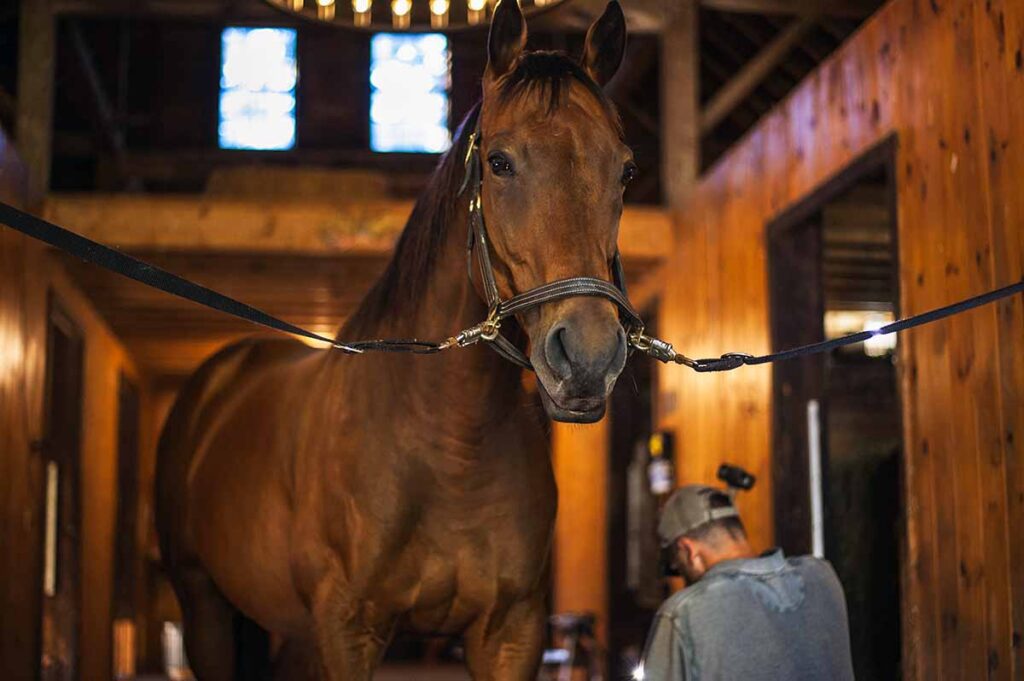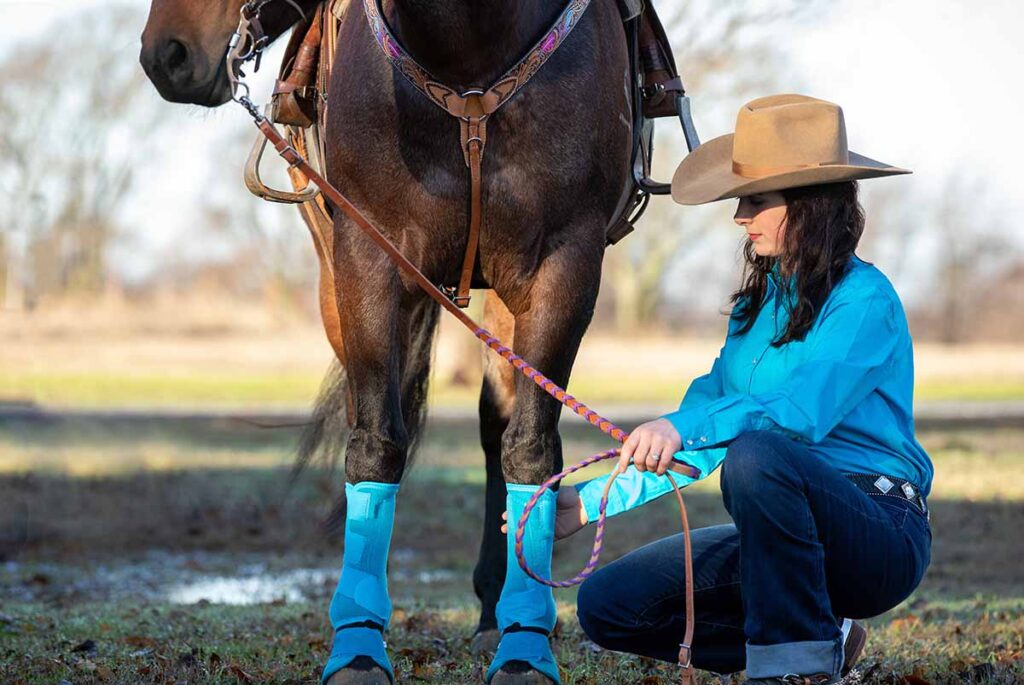While cleaning your horse’s feet, you notice the frog—that fleshy triangle on the bottom of each hoof—has sections of tissue that are peeling off. It might make you wonder if you should be worried. Fortunately, in most cases, shedding, also known as exfoliation, is a natural part of the hoof growth process.
Much like a snake shedding its skin, your horse’s frog will slough off old, dead tissue multiple times a year. Here’s what you can expect and changes to watch for that might indicate an issue.
Understanding the Horse’s Frog
The frog is the V-shaped structure on the bottom of the horse’s hoof that plays a vital role in soundness. The frog absorbs shock, encourages circulation out of the hoof, protects soft tissue, and provides traction. Like the hoof wall, the frog tissue grows continuously.
If you see your horse’s frog shed between hoof care appointments, ask your farrier for his or her advice on whether to trim the loose edges. Some farriers believe it’s best to let the excess tissue deteriorate naturally. Others prefer to trim it to limit the horse’s chances of developing thrush or other infections.
When to Worry
While frog shedding or exfoliation is natural, it’s crucial to monitor the condition of your horse’s hooves to determine if shedding is part of the normal process or a sign of something more serious. Here are some signs that warrant a closer look:
- Foul odor: A bad smell from the hoof can indicate an infection such as thrush. Thrush is a bacterial infection that affects the frog and surrounding areas. It thrives in wet, dirty conditions and can cause significant damage if left untreated.
- Lameness: Call your farrier and veterinarian if your horse is limping or showing signs of pain. Multiple factors can cause lameness, from minor issues such as an abscess or foot bruising to more significant problems.
- Excessive moisture: Hooves need some moisture to maintain the frog’s elasticity. However, excessively wet conditions such as mud or dirty conditions like standing in manure can increase the risk of hoof infections.
- Discoloration or texture changes: Healthy frogs are typically dark, smooth, and slightly springy. If you see color or texture changes in the frog, it might indicate a problem. Hard, cracked, or excessively dry frogs can indicate poor hoof health.
Preventive Measures
Good hoof care is crucial in preventing abnormal frog shedding and related issues. Try these tips for healthy hooves:
- Regular trimming: Make sure you have a skilled farrier trim your horse’s hooves regularly. Proper trimming helps maintain balance and promotes healthy growth.
- Clean environment: Keep your horse’s living area as clean and dry as possible. Avoid prolonged exposure to muddy or wet conditions.
- Balanced diet: Provide a well-balanced diet that revolves around forage—hay and grass—with grain added based on the individual horse and his circumstances (age, exercise level, overall health). If you’re unsure whether your horse is getting the nutrients he needs, ask your veterinarian or an equine nutritionist for help.
- Pick feet regularly: Pick your horse’s feet regularly—ideally daily—and check for any signs of irregular changes. Spotting issues early can help prevent more serious problems from developing.
Hoof health is critical for keeping a horse comfortable and sound. Healthy hooves result from a combination of maintaining a regular schedule with the farrier, providing good nutrition, and maintaining a clean living environment. If your horse’s frog is shedding, it’s probably perfectly normal, but keep an eye on it nonetheless.
Related Reading:
- Recognizing the Signs Your Horse Has a Hoof Problem
- Horse Hoof Care Schedules, Supplies, and Best Practices
- Common Horse Hoof Problems and How To Manage Them
Katie Navarra Bradley is a writer and author who covers horses, agriculture, and sustainability. She also partners with horses to deliver equine-assisted business and leadership coaching.
Are you enjoying this content? Sign up for My New Horse’s FREE newsletter to get the latest horse owner info and fun facts delivered straight to your inbox!





